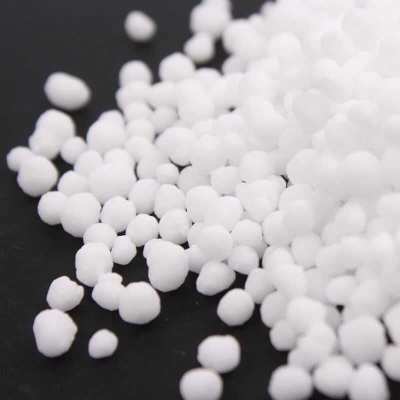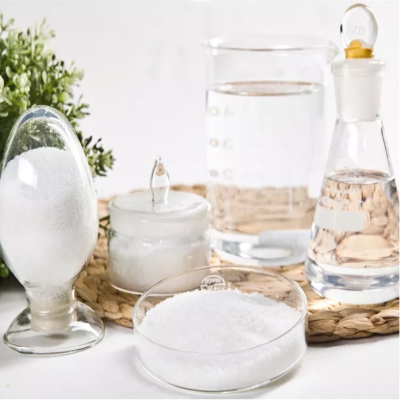-
Categories
-
Pharmaceutical Intermediates
-
Active Pharmaceutical Ingredients
-
Food Additives
- Industrial Coatings
- Agrochemicals
- Dyes and Pigments
- Surfactant
- Flavors and Fragrances
- Chemical Reagents
- Catalyst and Auxiliary
- Natural Products
- Inorganic Chemistry
-
Organic Chemistry
-
Biochemical Engineering
- Analytical Chemistry
- Cosmetic Ingredient
-
Pharmaceutical Intermediates
Promotion
ECHEMI Mall
Wholesale
Weekly Price
Exhibition
News
-
Trade Service
With the gradual development of electronic devices in the direction of miniaturization and integration, the heat dissipation problem of high-power integrated circuits has become a key factor affecting the performance stability, operational reliability and life durability of electronic devices, and there is an urgent need to use better thermal conductivity composites as to electronic packaging materials, boards, and other structures
.
Polymer has the advantages of light weight, low price and easy processing and molding, while the intrinsic thermal conductivity of common polymer matrix is low, and it does not have the ability to be used as a thermal conductive material alone.
Therefore, how to effectively improve the polymer in thermally conductive composite materials The thermal conductivity of the substrate has become one of the key technologies to be solved urgently as a thermal management material for electronic devices
.
Graphene two-dimensional structure? As a two-dimensional carbon nanomaterial, graphene has high electron mobility (15000~52700 cm2/(V·s)) and thermal conductivity (3080~5150 W/(m·K) )) [1-2], which can construct an excellent thermal conduction channel for the heat transfer of phonons in the polymer matrix, thereby effectively improving the thermal conductivity of the polymer-based graphene composite
.
For example, Shi et al.
[3] prepared Fe3O4@magnetized graphene/silicone rubber composite materials that can form an efficient heat conduction path in the orientation direction under the induction of an external magnetic field
.
When the content of magnetized graphene (MG) is 5.
0 wt%, the in-plane thermal conductivity of the material reaches 0.
6 W/(m·K)
.
If the graphene is not surface functionalized, the overall thermal conductivity of the composite material is limited.
It can be seen that the graphene surface functionalization has a significant effect on the improvement of the thermal conductivity of the composite material
.
? The high interface thermal resistance and weak interface effect between graphene and the polymer matrix are the main factors that affect the heat transfer of the composite material system.
Surface functionalization of graphene is a very effective technical means to solve the above problems [4 ]
.
Graphene surface functionalization can be divided into non-covalent bond functionalization and covalent bond functionalization [5]
.
? Zong et al.
[6] successfully constructed ApPoss-graphene/epoxy resin composites by forming amide groups between aminopropyl isobutylene polyhedral oligomeric silsesquioxane (ApPoss) and graphene oxide
.
Experiments show that the compatibility between ApPoss and epoxy resin matrix is good and the phonon transfer scattering is small; when the graphene content is 0.
3 wt%, the thermal conductivity of the composite is 0.
3 W/(m·K)
.
ApPoss grafted on graphene oxide effectively hinders the aggregation of graphene oxide in the polymer matrix, and at the same time acts as a surface functionalized active site that connects graphene oxide and epoxy resin segments, making the material's thermal conductivity significant Improve
.
? Cao et al.
[7] prepared the diamond/graphene/copper composite material by in-situ growth method.
The study found that the in-situ growth of graphene on the surface of copper particles promoted the formation of a strong covalent bond between the two and improved The wettability of the interface between diamond and copper has been increased by 3.
7 times, and the thermal conductivity of the composite material has been increased by 61.
0% (572.
9 W/(m·K)) compared with no graphene interlayer.
The study is The interface functionalization of diamond/copper composites provides a new way
.
? Dong et al.
[8] used a one-pot method to modify styrene-butadiene rubber (SBR) to prepare SBR/MG nanocomposites, and perform simultaneous chemical reduction and surface treatment of graphene oxide through 2-mercaptobenzothiazole (M).
The modification enables the formation of chemical covalent grafting between rGO and M, which not only reduces the irreversible agglomeration of graphene, but also improves the interaction of the two-phase interface
.
The results show that when the filler content is 8 phr (per hundred parts of rubber content), the thermal conductivity of the SBR/MG composite is 51.
0% higher than that of pure SBR
.
? Fang et al.
[9] used π-π interactions to coat polydopamine (PDA) on the surface of three-dimensional graphene foam (GF) to promote the chemistry of the functional groups of PDA with 3-aminopropyltriethoxysilane (APTS) Response
.
Then, the modified GF is further compressed (c-GF) to increase the density, and is infiltrated with polydimethylsiloxane (PDMS), and finally a c-GF/PDA/APTS/PDMS composite material is prepared
.
When the GF content is 11.
6 wt%, the in-plane thermal conductivity of the composite material is 28.
8 W/(m·K), and the out-of-plane thermal conductivity is 1.
6 W/(m·K).
The excellent thermal conductivity makes the material have a huge Industrial application potential
.
? At the same time, the Mo Rui Technology team has developed a graphene modified thermally conductive PC (polycarbonate) masterbatch
.
The product is based on key preparation techniques to precisely control the characteristics of graphene oxide, such as the diameter, number of layers, and active functional groups, and cleverly uses the abundant active functional groups on its surface to modify and combine with mechanical graphene nanosheets, and finally uses dispersion The atomization technology performs uniform coating between the powders, thereby forming a heat conduction path, achieving a heat conduction and heat dissipation effect of 1+1>2
.
This not only guarantees the original mechanical properties of PC, but also increases its thermal conductivity from 0.
2W/(m·K) to 1.
0W/(m·K), and the in-plane thermal conductivity reaches 3.
0 W/(m·K).
In addition, through thermal simulation test verification, it is found that compared with the thermally conductive PCs on the market, this product can quickly and evenly conduct the heat of the heat source in the material under the same conditions, preventing the accumulation of local temperature caused by excessively high heat source temperature.
Lower
.
This product is suitable for molding processes such as injection molding and hot pressing.
It is used to manufacture various electronic product device shells and other structural parts to solve the thermal management problems encountered in the application.
At the same time, it can meet the product's demand for portability and light weight.
Reduce the amount of other functional fillers
.
? Graphene modified thermally conductive PC masterbatch? Thermally conductive PC material thermal simulation test results? In summary, graphene surface functionalization can effectively improve the interface interaction, reduce the interface thermal resistance between it and the polymer matrix, and improve the composite The thermal conductivity of the material has a very positive effect
.
.
Polymer has the advantages of light weight, low price and easy processing and molding, while the intrinsic thermal conductivity of common polymer matrix is low, and it does not have the ability to be used as a thermal conductive material alone.
Therefore, how to effectively improve the polymer in thermally conductive composite materials The thermal conductivity of the substrate has become one of the key technologies to be solved urgently as a thermal management material for electronic devices
.
Graphene two-dimensional structure? As a two-dimensional carbon nanomaterial, graphene has high electron mobility (15000~52700 cm2/(V·s)) and thermal conductivity (3080~5150 W/(m·K) )) [1-2], which can construct an excellent thermal conduction channel for the heat transfer of phonons in the polymer matrix, thereby effectively improving the thermal conductivity of the polymer-based graphene composite
.
For example, Shi et al.
[3] prepared Fe3O4@magnetized graphene/silicone rubber composite materials that can form an efficient heat conduction path in the orientation direction under the induction of an external magnetic field
.
When the content of magnetized graphene (MG) is 5.
0 wt%, the in-plane thermal conductivity of the material reaches 0.
6 W/(m·K)
.
If the graphene is not surface functionalized, the overall thermal conductivity of the composite material is limited.
It can be seen that the graphene surface functionalization has a significant effect on the improvement of the thermal conductivity of the composite material
.
? The high interface thermal resistance and weak interface effect between graphene and the polymer matrix are the main factors that affect the heat transfer of the composite material system.
Surface functionalization of graphene is a very effective technical means to solve the above problems [4 ]
.
Graphene surface functionalization can be divided into non-covalent bond functionalization and covalent bond functionalization [5]
.
? Zong et al.
[6] successfully constructed ApPoss-graphene/epoxy resin composites by forming amide groups between aminopropyl isobutylene polyhedral oligomeric silsesquioxane (ApPoss) and graphene oxide
.
Experiments show that the compatibility between ApPoss and epoxy resin matrix is good and the phonon transfer scattering is small; when the graphene content is 0.
3 wt%, the thermal conductivity of the composite is 0.
3 W/(m·K)
.
ApPoss grafted on graphene oxide effectively hinders the aggregation of graphene oxide in the polymer matrix, and at the same time acts as a surface functionalized active site that connects graphene oxide and epoxy resin segments, making the material's thermal conductivity significant Improve
.
? Cao et al.
[7] prepared the diamond/graphene/copper composite material by in-situ growth method.
The study found that the in-situ growth of graphene on the surface of copper particles promoted the formation of a strong covalent bond between the two and improved The wettability of the interface between diamond and copper has been increased by 3.
7 times, and the thermal conductivity of the composite material has been increased by 61.
0% (572.
9 W/(m·K)) compared with no graphene interlayer.
The study is The interface functionalization of diamond/copper composites provides a new way
.
? Dong et al.
[8] used a one-pot method to modify styrene-butadiene rubber (SBR) to prepare SBR/MG nanocomposites, and perform simultaneous chemical reduction and surface treatment of graphene oxide through 2-mercaptobenzothiazole (M).
The modification enables the formation of chemical covalent grafting between rGO and M, which not only reduces the irreversible agglomeration of graphene, but also improves the interaction of the two-phase interface
.
The results show that when the filler content is 8 phr (per hundred parts of rubber content), the thermal conductivity of the SBR/MG composite is 51.
0% higher than that of pure SBR
.
? Fang et al.
[9] used π-π interactions to coat polydopamine (PDA) on the surface of three-dimensional graphene foam (GF) to promote the chemistry of the functional groups of PDA with 3-aminopropyltriethoxysilane (APTS) Response
.
Then, the modified GF is further compressed (c-GF) to increase the density, and is infiltrated with polydimethylsiloxane (PDMS), and finally a c-GF/PDA/APTS/PDMS composite material is prepared
.
When the GF content is 11.
6 wt%, the in-plane thermal conductivity of the composite material is 28.
8 W/(m·K), and the out-of-plane thermal conductivity is 1.
6 W/(m·K).
The excellent thermal conductivity makes the material have a huge Industrial application potential
.
? At the same time, the Mo Rui Technology team has developed a graphene modified thermally conductive PC (polycarbonate) masterbatch
.
The product is based on key preparation techniques to precisely control the characteristics of graphene oxide, such as the diameter, number of layers, and active functional groups, and cleverly uses the abundant active functional groups on its surface to modify and combine with mechanical graphene nanosheets, and finally uses dispersion The atomization technology performs uniform coating between the powders, thereby forming a heat conduction path, achieving a heat conduction and heat dissipation effect of 1+1>2
.
This not only guarantees the original mechanical properties of PC, but also increases its thermal conductivity from 0.
2W/(m·K) to 1.
0W/(m·K), and the in-plane thermal conductivity reaches 3.
0 W/(m·K).
In addition, through thermal simulation test verification, it is found that compared with the thermally conductive PCs on the market, this product can quickly and evenly conduct the heat of the heat source in the material under the same conditions, preventing the accumulation of local temperature caused by excessively high heat source temperature.
Lower
.
This product is suitable for molding processes such as injection molding and hot pressing.
It is used to manufacture various electronic product device shells and other structural parts to solve the thermal management problems encountered in the application.
At the same time, it can meet the product's demand for portability and light weight.
Reduce the amount of other functional fillers
.
? Graphene modified thermally conductive PC masterbatch? Thermally conductive PC material thermal simulation test results? In summary, graphene surface functionalization can effectively improve the interface interaction, reduce the interface thermal resistance between it and the polymer matrix, and improve the composite The thermal conductivity of the material has a very positive effect
.







